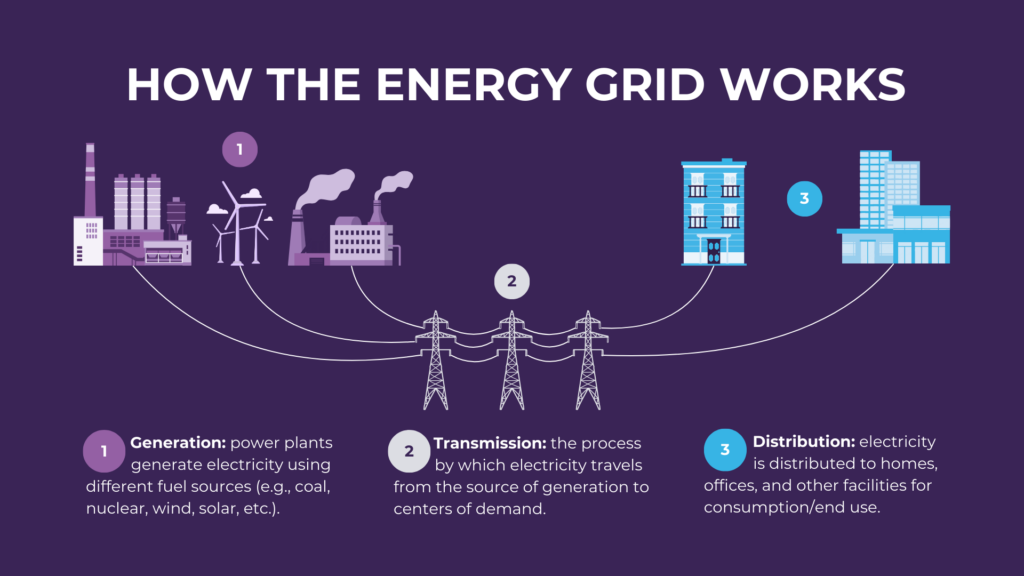Whether you are a supplier being required to report your carbon emissions as part of a supply chain decarbonization program or are seeing environmental regulations on the horizon, you may be finding that measuring carbon emissions has become increasingly critical for your business.
Whatever the reason, many companies face unique challenges when undertaking emissions reporting and reduction. Small to medium-sized enterprises (SMEs), for example, tend to face higher resource and time constraints than larger corporations, which can make decarbonization overwhelming and burdensome, not to mention the lack of sustainability know-how that can feel like a barrier to getting started.
In this guide, we walk you through some basic concepts and provide a step-by-step guide for how best to decarbonize your operations quickly and on a tight budget.
Wait, why does decarbonization matter again?
When time is money and you are working with limited resources, sustainability can seem like a cherry on top rather than a crucial part of your business strategy, but the reality is that decarbonizing your business offers a wealth of benefits that often go undiscussed.
Beyond the obvious environmental advantages, reducing emissions can lead to significant cost savings through increased energy efficiency and lower utility bills. According to McKinsey and Company, businesses can abate anywhere from 20 to 40 percent of emissions while still reducing their production costs.
Demonstrating a commitment to sustainability can also enhance your company’s reputation, attracting environmentally conscious consumers and partners. By taking proactive steps, SMEs not only contribute positively to the planet but also strengthen their market position and build a legacy of responsible business practices.

“Waiting to decarbonize is costing your business. Here’s why:”
Decarbonization isn’t just about helping the planet, it also benefits your bottom line. In this article, we break down how decarbonization can lead to cost savings and other business benefits.
Read the full articleThe first step to measuring your emissions is to first understand what emissions are and how they are broken down. Generally speaking, a company’s carbon footprint is broken down into 3 categories, or Scopes.
Scope 1 covers direct emissions from sources owned or controlled by your business, such as company vehicles and onsite fuel combustion.
Scope 2 encompasses indirect emissions used in your business’s operation. Usually, this refers to purchased electricity, steam, heating, and cooling which are generated offsite (in the grid) but consumed by your enterprise in your offices, warehouses, factories, or more.
Scope 3 is, in many ways, the catch-all of greenhouse gas emissions– covering anything from emissions from employee commuting to the emissions along your supply chain. Although a critical part of any decarbonization strategy, Scope 3 emissions do not come from your direct operations and are often out of your control. For the purposes of this guide, we will be focusing on your operation’s Scope 1 and Scope 2 footprints; that said, our comprehensive supply chain decarbonization guide helps break down how to tackle the majority of your Scope 3 emissions.


“Why & How to Measure Your Carbon Emissions Early”
It may not seem like it, but with many regulatory compliance deadlines on the horizon, the time is now to begin decarbonizing, In this article, we break down the benefits of starting to measure your carbon footprint today and provide some tips for getting started.
Read the full articleHow to Measure Your Scope 1 Carbon Emissions
Now comes the big part: measuring your emissions. Although it may seem complicated, there are many ways to simplify and streamline the process of calculating your emissions. Generally speaking, the process of calculating your Scope 1 emissions is as follows:
Step 1: Identify Sources
Before you can gather any sort of data on your business’s carbon footprint, you first need to identify where your Scope 1 emissions might be coming from. Because Scope 1 emissions are direct emissions owned and controlled by the reporting company, sources of Scope 1 emissions include any sort of fuel (e.g., oil, diesel, natural gas, biomass, coal, wood, etc.) that undergoes combustion on-site as well as gases released from refrigerants in commercial cooling equipment (e.g., air conditioners, refrigerators, fire suppression systems, and some industrial chemicals and processes). The most common sources of Scope 1 emissions for your business might be:
- Boilers
- Company-owned vehicles
- On-site generators
- Air conditioners
Step 2: Collect Activity Data
Once you have identified your emissions sources, you then will need to gather data on how often and how much these sources have been used. This will ultimately be used to calculate your carbon footprint, so it is crucial to collect the highest quality data available to ensure you get an accurate and precise measurement.
Records on fuel consumption and production levels — such as utility bills, fuel purchase records, production logs, on-site meters, and other equipment usage data — commonly have just what you’re looking for, so these can be a great starting point.
Step 3: Quantify Emissions
It’s time to calculate your carbon footprint. Your usage data is transformed into emissions data using emissions factors or conversion rates, which reflect the amount of greenhouse gases emitted per unit of activity. For example, let’s say you own a fleet of cars, which collectively used 200 gallons of diesel last month. To calculate the emissions associated with this energy usage, you would take the appropriate emissions factor for diesel which is roughly 10,000 grams of carbon dioxide per gallon) and multiply it by the amount of diesel consumed:
200 gallons of diesel x 10,000 grams of CO2 per gallon = ~2.2 tons of CO2e emitted
It is possible to manually calculate your entire Scope 1 emissions this way, but finding the appropriate emissions factors and going through an entire year’s worth of data can become very tedious, very quickly.
This is where software can come in handy; Zeigo Activate, for example, can take your activity data (what you gathered in Step 2) and automatically calculate it for you.
NOTE: Although technologies like Zeigo Activate can automate the emissions calculation process for you, their results are only as good as the quality of the data you put in. Making sure your data is as accurate, precise, and complete as possible will help make sure you get the right measurements and insights!

Measure, track, and reduce your carbon footprint with Zeigo Activate.
Our carbon reduction software gives you access to resources for calculating and tracking energy-related emissions so you can put your sustainability ambitions into action.
Learn more about Zeigo Activate today!If you’ve followed these three steps, then congratulations! You have successfully calculated your Scope 1 emissions. Now it is time to calculate your Scope 2 emissions; the steps for calculating your Scope 2 are the same, but because the sources of Scope 2 emissions are unique, the process may look a bit different.
How to Measure Your Scope 2 Emissions
Step 1: Identify Sources
As we learned earlier, Scope 2 emissions come from any purchased or acquired electricity, steam, heating, or cooling. Thankfully for us, this limits the potential Scope 2 emissions sources pretty nicely.
Before collecting any data, take a moment to think about where your business’ Scope 2 emissions may be coming from. Usually, electricity makes up the majority of an operation’s Scope 2 footprint, but is not the sole source; steam, heating and cooling processes also fall under Scope 2 and can be significant contributors to a company’s carbon footprint (especially for industrial and manufacturing companies!).
Step 2: Collect Activity data
Much like with Scope 1, the next step in measuring your Scope 2 emissions is to collect activity data— this time from your Scope 2 emissions sources. Any data on electricity usage, heat and steam consumption, cooling usage, or energy intensity metrics (a.k.a., energy use per unit of production) will be helpful in this step. Utility bills will likely be the primary source of this data for you, although other examples can include:
- Energy procurement contracts
- Facility energy reports
- Internal energy use records
Step 3: Quantify Emissions
When it comes to electricity, it is important to keep in mind that the carbon footprint of the electricity we consume depends almost entirely on how it was created. Electricity generated by a coal-powered plant will have a much larger carbon footprint than electricity generated by wind turbines.
Most of the time, the electricity we use is delivered to us through an energy grid. Think of the energy grid as an electricity middleman; on one side, we have the power plants that generate electricity and inject that electricity into the grid, and on the other, we have the consumers of electricity (a.k.a., you!).

All energy grids rely on a variety of electricity-generation sources, from coal to nuclear to solar. As a result, each energy grid has a unique carbon footprint that reflects the carbon intensity of its generation sources. This means that businesses operating on a cleaner grid may automatically have a smaller carbon footprint, even if they are consuming the same amount of energy as a business on a dirtier grid. No need to lose hope, though, we’ll talk later about ways you can reduce your Scope 2 footprint without having to up and move your operations to a cleaner grid.
There are two approaches to calculating Scope 2 emissions: a location-based approach, or a market-based approach. A location-based approach uses emission factors specific to the grid where the electricity was consumed. On the other hand, a market-based approach allows organizations to use the emissions attributes from purchased renewable energy (i.e. Power Purchase Agreements, or PPAs). We’re going to focus on a location-based approach for now, but we’ll come back to the market-based approach later.
In either scenario, to calculate your Scope 2 emissions, you will take the appropriate emission factor aligned with your approach and multiply by electricity consumption to get your carbon emission measurement. For example, if I were a New York-based company who consumed 1,000 megawatt-hours of electricity this year, my calculations might look like the following:
New York grid emission factor= 0.55 tons of CO2 per megawatt-hour of electricity consumed
1,000 MWh x 0.55 tons CO2/MWh = ~550 tons of CO2 emitted
Again, having high-quality activity data will help ensure that the calculations you receive are accurate and relevant to your operations. As you decarbonize, many decisions will be made based on your emissions data, so it is important to make sure it accurately reflects your operations.
Establish an emissions baseline: your decarbonization starting line
You did it! After following steps 1-3, you will have successfully measured your Scope 1 and 2 emissions! You can use these measurements to set an emissions baseline. A baseline is representative of what your company’s emissions output looks like under normal operations; in other words, before you begin decarbonizing.
When deciding a base year for this emissions baseline, it is recommended that you select the first reporting year for which you have complete and accurate data on your supply emissions; this may not be the case for your first report but aim to establish a baseline as quickly as possible. After all, your emissions baseline serves as a critical “starting point” from which you will develop decarbonization and emissions reduction targets.
Your business will grow and evolve with time, and it can be helpful to set up a recalculation policy in the event you need to change your baseline. Unless you undergo mergers/acquisitions or some other structural change to your organization, however, your baseline will stay the same.
Once you have set a baseline, it is time to start decarbonizing; but what does that even look like?

Building Your Decarbonization Roadmap
What is a decarbonization roadmap, why is it important to build one, and how can you get started? Great questions! Lucky for you, we have an article that breaks down all things decarbonization roadmaps and even gives you some tips for success.
Read the full article hereSetting Targets: Talking the Emissions-Reduction Talk.
As you undergo decarbonizing your operations, it is useful to set targets for yourself to hold yourself accountable and track your progress. When determining what targets to set, aim to strike a balance between setting a goal that is ambitious and one that is achievable. Setting a goal that is impossible to reach could be considered greenwashing and might damage your company’s reputation among stakeholders.
Software can help you with target-setting as well. Zeigo Activate can help you set sustainability by taking the data you upload to the platform and, powered by AI, creating a decarbonization roadmap that is fully customized to you and your unique business needs.
Decarbonization: Walking the Emissions-Reduction Walk
Reduce where you can, offset the rest. This is what decarbonization looks like in the simplest terms. But where can you find these emission reduction opportunities, and what can you do once you identify them?
Energy Efficiency: the key to emissions reductions.
Energy efficiency is a critical component of decarbonization strategies, particularly in the context of Scopes 1 and 2 emissions. By improving energy efficiency, organizations can reduce their overall energy consumption, which directly lowers their greenhouse gas emissions. This is particularly important for Scope 1 emissions, where implementing energy-efficient technologies, such as high-efficiency boilers or advanced energy management systems, can significantly cut down the amount of fossil fuel burned, thereby decreasing emissions.
Take a look at the sources of your Scope 1 emissions. Owning vehicles with poor gas mileage, for example, could be a significant contributor to your carbon footprint and to your budget! Fuel-efficient vehicles, while they may have a higher upfront cost, could not only lower your emissions, but can also
For Scope 2 emissions, energy efficiency plays an equally important role. By optimizing energy use in buildings and operations—through measures like upgrading to LED lighting or enhancing insulation—companies can reduce their electricity demand. This not only lowers the associated emissions from electricity generation but also helps ease the burden on power grids. In both cases, energy efficiency not only contributes to decarbonization efforts but also leads to cost savings, making it a win-win for businesses looking to become more sustainable.
Offsetting:
Offsetting can play a vital role in a company’s decarbonization strategy, helping them achieve their environmental goals while still working to minimize their emissions at the source. The most well-known type of offsets are carbon offsets, but we will also break down energy attribute credits, which relate specifically to renewable energy.
Is Less More When it Comes to Carbon Offsets?
Carbon offsets are a way for companies to compensate for their greenhouse gas emissions by investing in projects that reduce or remove an equivalent amount of carbon dioxide from the atmosphere. For example, a company that emits carbon through its operations might purchase offsets from a reforestation project, where trees absorb CO2. This approach allows businesses to support sustainability initiatives globally while they work on reducing their own emissions over time, but it is important to know that carbon offsets can be fickle and should cover no more than 10% of your total footprint.

Curious about how to use carbon offsets wisely?
Learn how carbon credits can (and should) be a part of your decarbonization strategy!
Read the full article hereEnergy Attribute Credits: what they are and how they play into your decarbonization strategy
On the other hand, Energy Attribute Credits (EACs), such as Renewable Energy Certificates (RECs), are specifically linked to the purchase of renewable energy. When a company buys EACs, it is essentially claiming the environmental benefits of renewable energy generation, even if the electricity it uses comes from conventional sources. This means that by investing in EACs, a company can demonstrate its commitment to renewable energy and lower its overall carbon footprint. EACs can help reduce a company’s Scope 2 emissions by allowing the company to use the supplier-specific emissions factor from the renewable energy project they purchased EACs for instead of the grid-based emissions factor associated with the electricity they physically consumed.
Companies can acquire large amounts of EACs through Power Purchase Agreements (PPAs), which are contracts between an electricity generator and a buyer. In a PPA, the buyer agrees to purchase the electricity generated by the producer at an agreed-upon price for a specified period. By entering into a PPA to buy electricity from a renewable energy project, such as a solar or wind farm, the company can ensure a stable and potentially lower-cost source of renewable electricity.
PPAs have a variety of benefits, such as reducing the company’s reliance on grid electricity, which may include a mix of fossil fuel and renewable sources, thereby lowering the overall carbon intensity of the electricity it uses. In other words, PPAs enable a company to support the development of renewable energy and reduce its carbon footprint by directly sourcing clean energy. It is important to note that PPAs involve the purchase of EACs on a very large scale, potentially making it an inaccessible option for companies with a small energetic footprint; however, Aggregate Power Purchase Agreements (APPAs) allow small companies to join forces and enter into a Power Purchase Agreement as a cohort, therefore eliminating certain barriers to entry.

How Aggregated PPAs Create Clean Energy Options for SMEs
Learn how PPAs can become a part of your energy procurement strategy as a small business!
Read the full articleZeigo Power simplifies the process of procuring renewable energy by standardizing the PPA tendering process and providing access to a marketplace of renewable energy developers. No matter where you are, Zeigo Power can help connect you to green energy.
Both carbon offsets and EACs are valuable tools in a decarbonization strategy, but they serve different purposes. While offsets focus on compensating for emissions by funding external projects, EACs are a direct way to support and invest in renewable energy. A comprehensive strategy often includes a combination of both, allowing companies to make immediate impacts while setting the stage for longer-term sustainability initiatives.
Now the real work begins: how you can turn ambition into impact with Zeigo Activate
Decarbonizing your business is no longer an optional endeavor; it’s a necessary step towards ensuring a sustainable future for both your enterprise and the planet. As a small- to medium-sized enterprise, your company may face unique challenges in emissions reporting and reduction; as a result, harnessing the power of technology and leveraging it throughout your decarbonization efforts can make this journey significantly more manageable.
With Zeigo Activate, you can seamlessly calculate your emissions, set meaningful targets, and build a customized decarbonization roadmap that aligns with your business’s unique needs. By incorporating energy efficiency measures and exploring renewable energy solutions like Power Purchase Agreements, you can effectively reduce your carbon footprint while enjoying cost savings and enhancing your company’s reputation.
Join the movement towards a greener tomorrow and let Zeigo Activate guide you in transforming ambition into impactful action. Together, we can create a legacy of responsible business practices that benefit both our environment and our bottom line.
